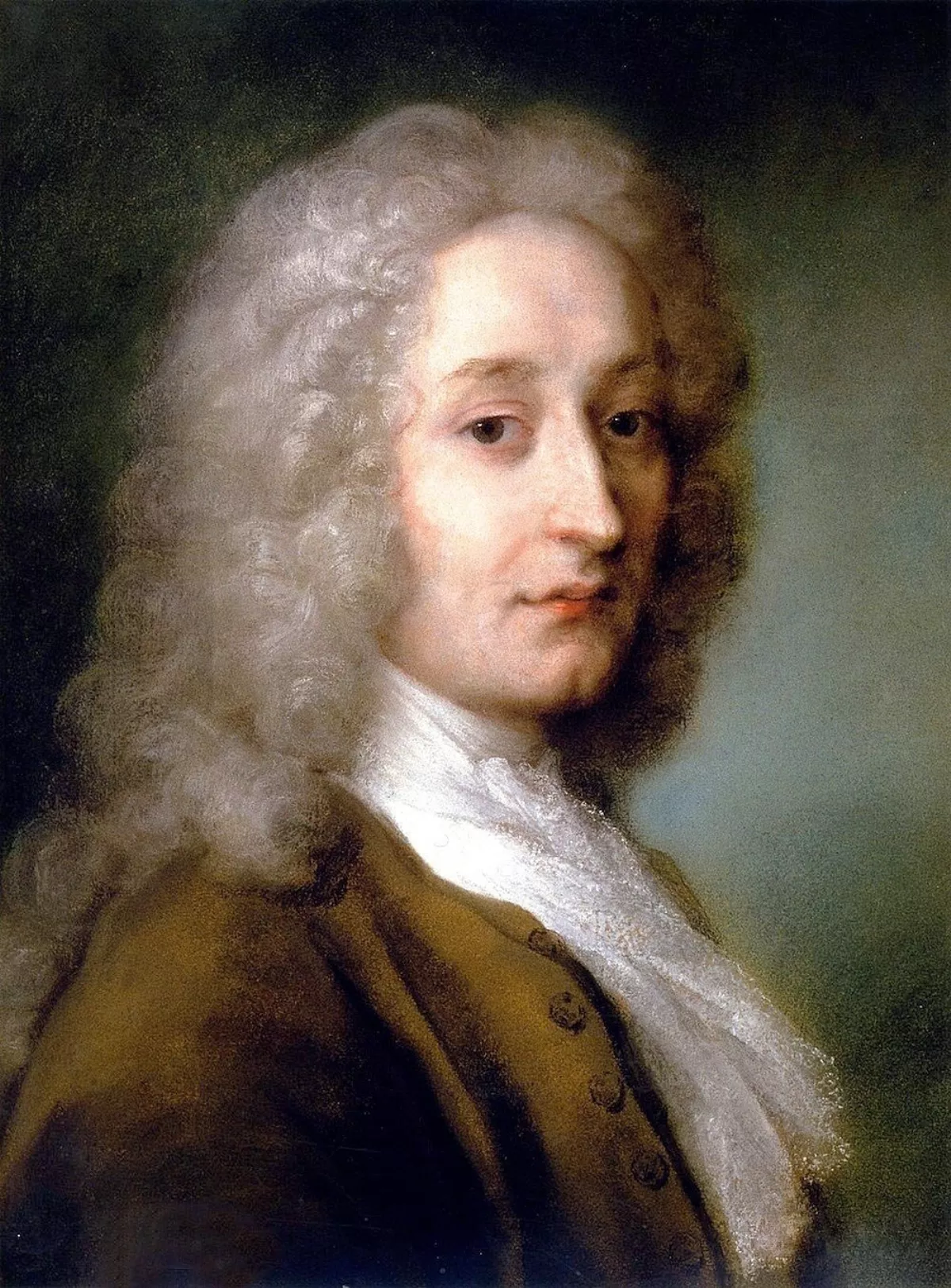 1.
1. Jean-Antoine Watteau was a French painter and draughtsman whose brief career spurred the revival of interest in colour and movement, as seen in the tradition of Correggio and Rubens.

 1.
1. Jean-Antoine Watteau was a French painter and draughtsman whose brief career spurred the revival of interest in colour and movement, as seen in the tradition of Correggio and Rubens.
Antoine Watteau revitalized the waning Baroque style, shifting it to the less severe, more naturalistic, less formally classical, Rococo.
Antoine Watteau was the second of four sons born to Jean-Philippe Watteau and Michelle Lardenois, and was presumed to be of Walloon descent.
Antoine Watteau's drawings attracted the attention of the painter Claude Gillot, and by 1705 he was employed as an assistant to Gillot, whose work, influenced by those of Francesco Primaticcio and the school of Fontainebleau, represented a reaction against the turgid official art of Louis XIV's reign.
In Gillot's studio, Antoine Watteau became acquainted with the characters of the commedia dell'arte, a favorite subject of Gillot's that would become one of Antoine Watteau's lifelong passions.
Audran was the curator of the Palais du Luxembourg, and from him Antoine Watteau acquired his knowledge of decorative art and ornamental design.
At the palace, Antoine Watteau was able to see the magnificent series of canvases painted by Peter Paul Rubens for Queen Marie de Medici.
Antoine Watteau showed the painting to Audran, who made light of it, and advised him not to waste his time and gifts on such subjects.
Antoine Watteau determined to leave him, advancing as excuse his desire to return to Valenciennes.
Antoine Watteau found a purchaser, at the modest price of 60 livres, in a man called Sirois, the father-in-law of his later friend and patron Edme-Francois Gersaint, and was thus enabled to return to the home of his childhood.
In 1709, Antoine Watteau tried to obtain a one-year stay in Rome by winning the Prix de Rome from the Academy, but managed only to get awarded with the second prize.
Antoine Watteau took those five years to deliver the required "reception piece", one of his masterpieces: the Pilgrimage to Cythera, called the Embarkation for Cythera.
Antoine Watteau then went to live with the collector Pierre Crozat, who eventually on his death in 1740 left around 400 paintings and 19,000 drawings by the masters.
Antoine Watteau lacked aristocratic patrons; his buyers were bourgeois such as bankers and dealers.
Antoine Watteau alarmed his friends by a carelessness about his future and financial security, as if foreseeing he would not live for long.
Antoine Watteau returned to France, spending six months with Gersaint, and then spent his last few months on the estate of his patron, Abbe Haranger, where he died in 1721, perhaps from tuberculous laryngitis, at the age of 36.
The Abbe said Antoine Watteau was semi-conscious and mute during his final days, clutching a paint brush and painting imaginary paintings in the air.
Little known during his lifetime beyond a small circle of his devotees, Antoine Watteau "was mentioned but seldom in contemporary art criticism and then usually reprovingly".
Sir Michael Levey once noted that Antoine Watteau "created, unwittingly, the concept of the individualistic artist loyal to himself, and himself alone".
In 1984 Antoine Watteau societies were created in Paris, by Jean Ferre, and London, by Dr Selby Whittingham.
Since 2000 a Antoine Watteau centre has been established at Valenciennes by Professor Chris Rauseo.